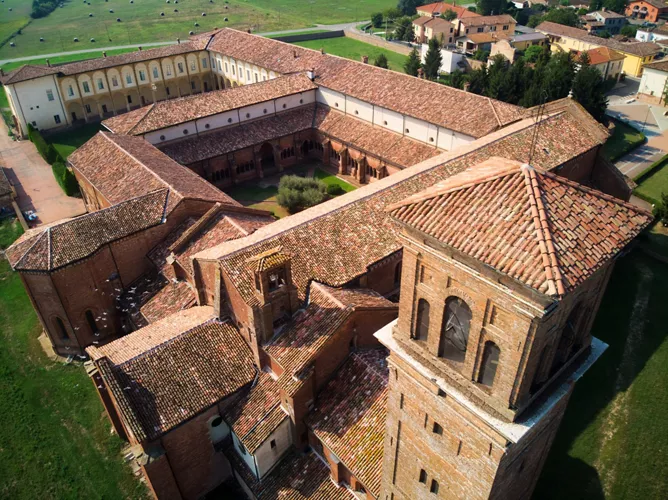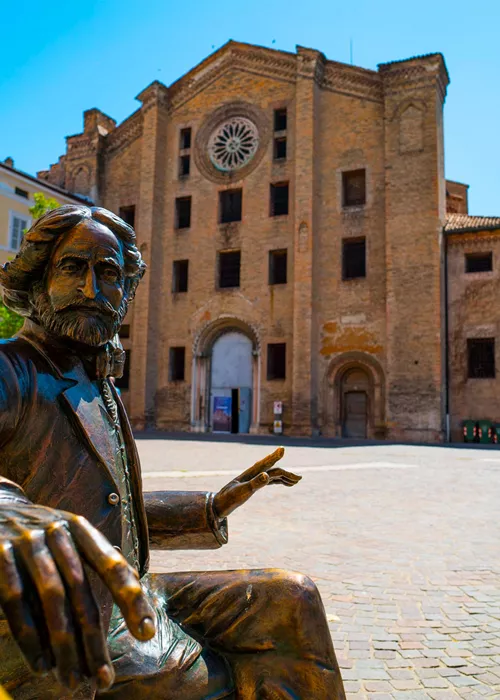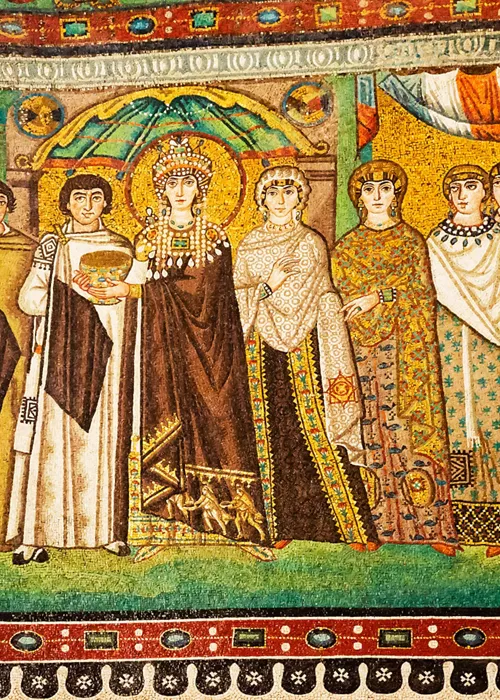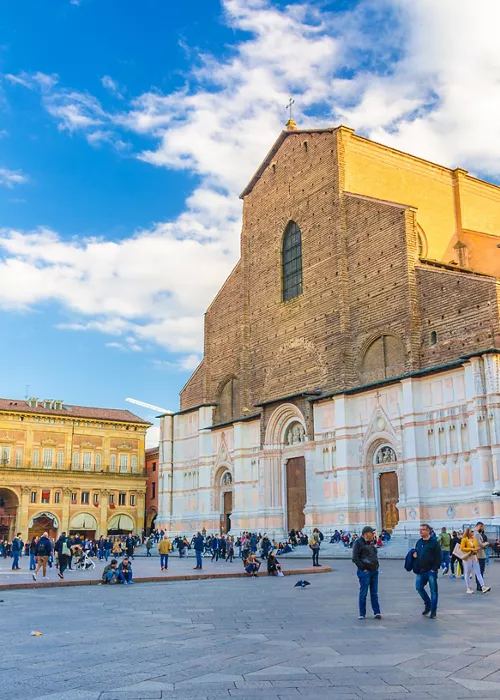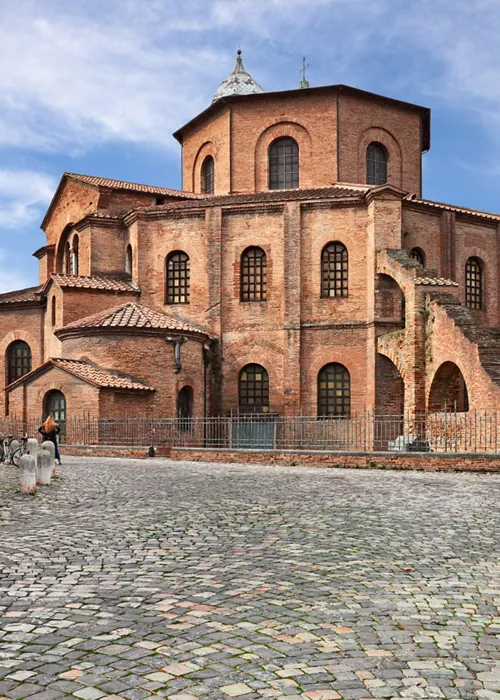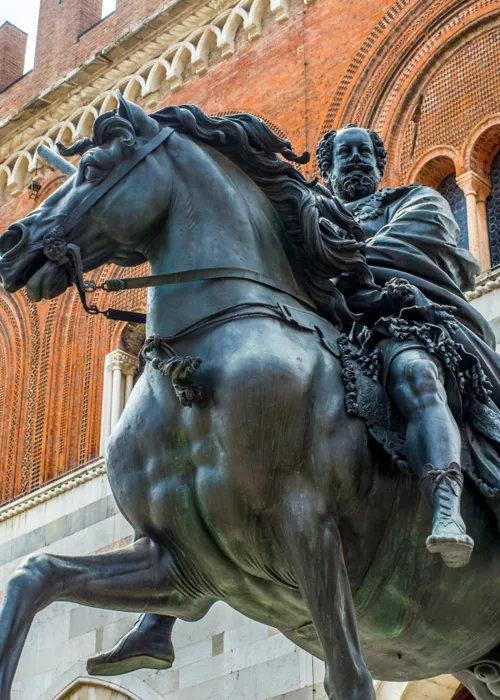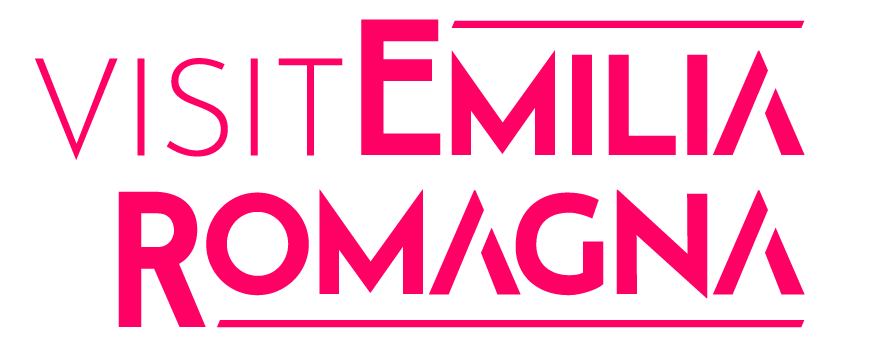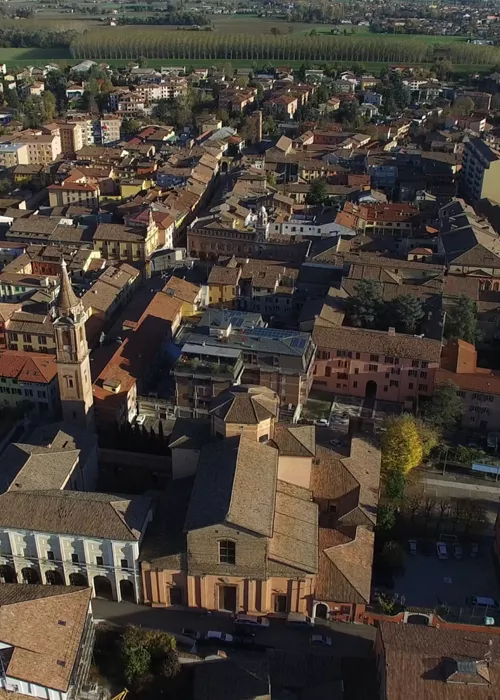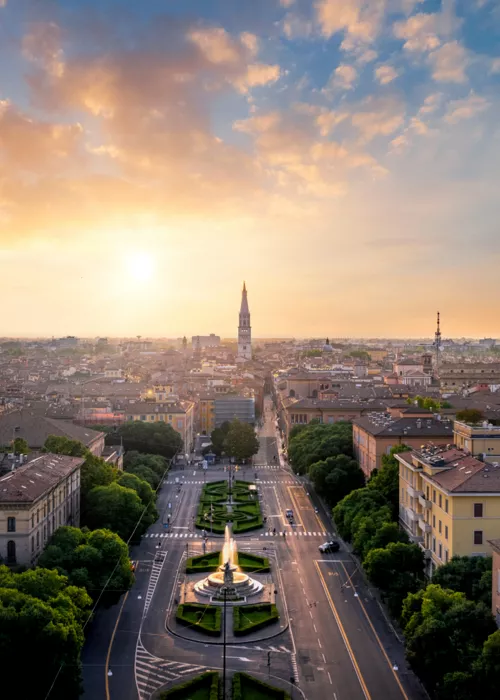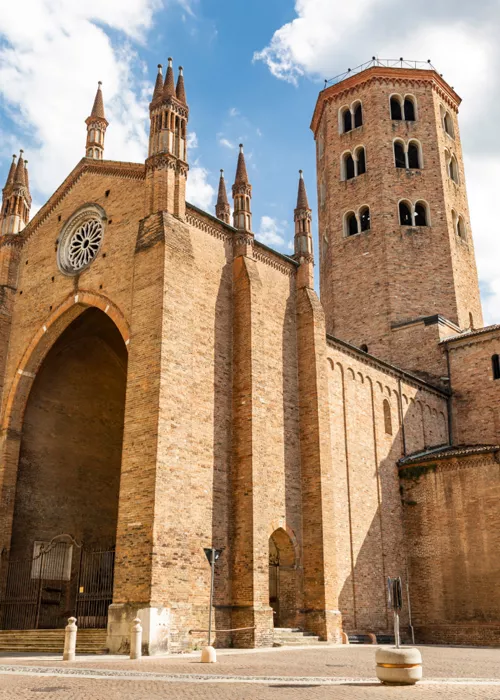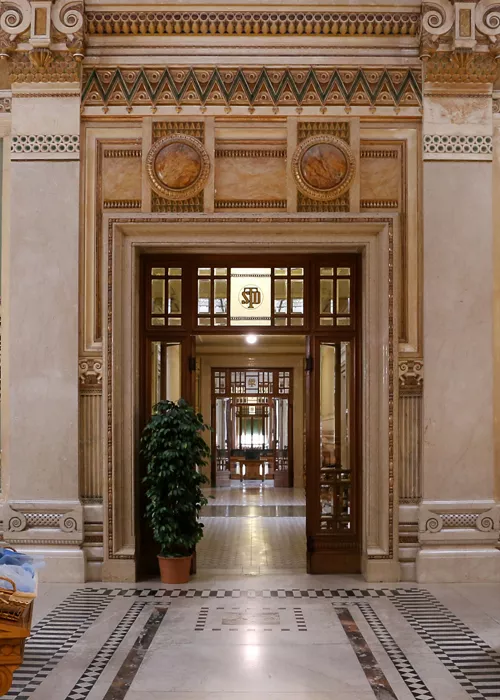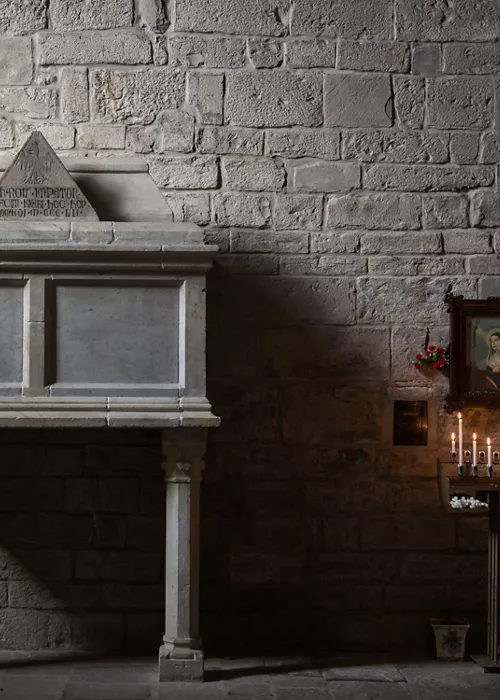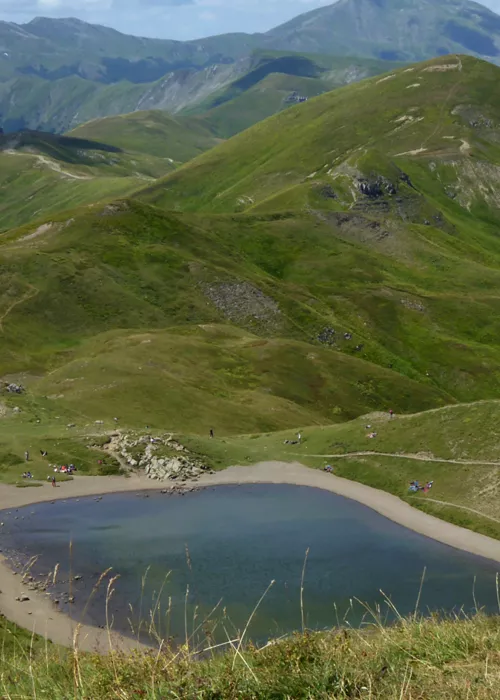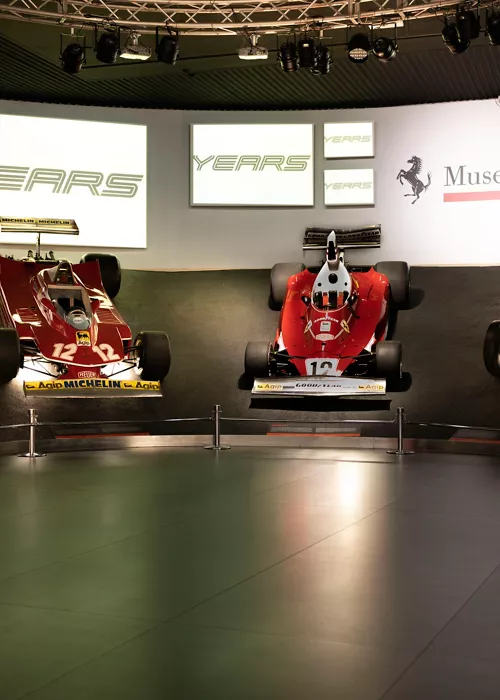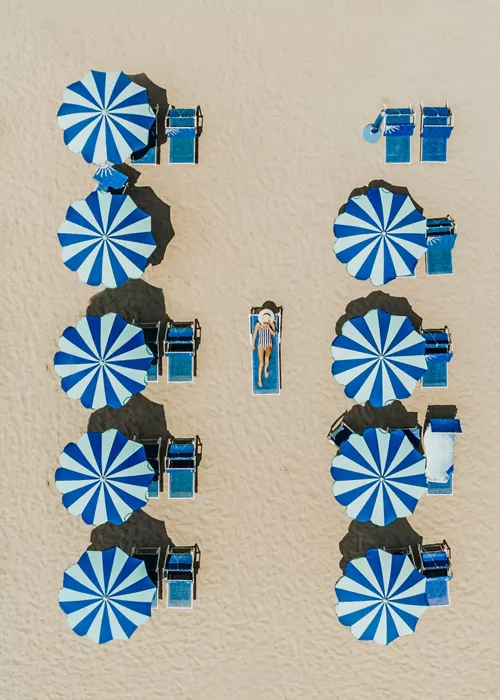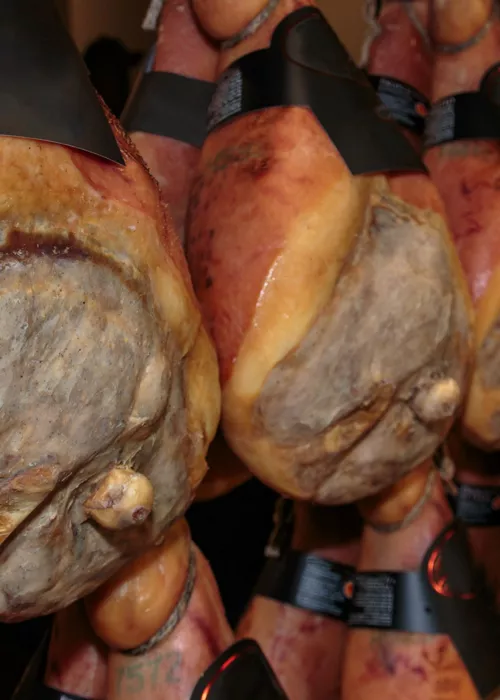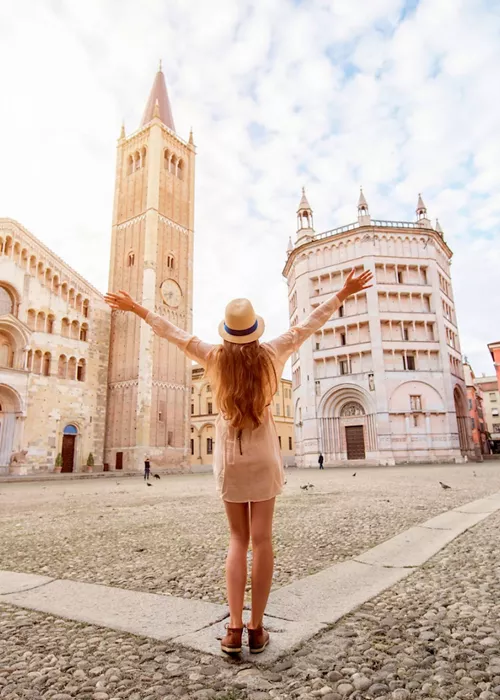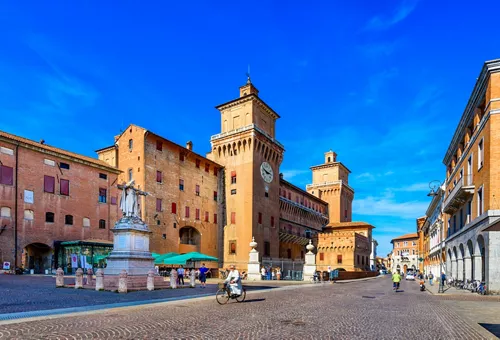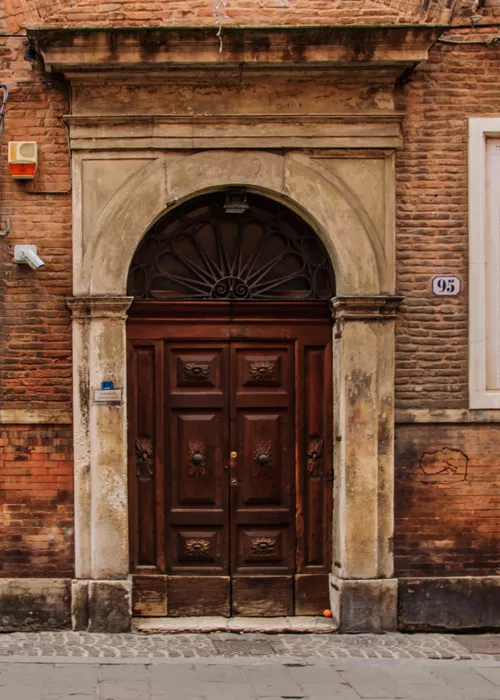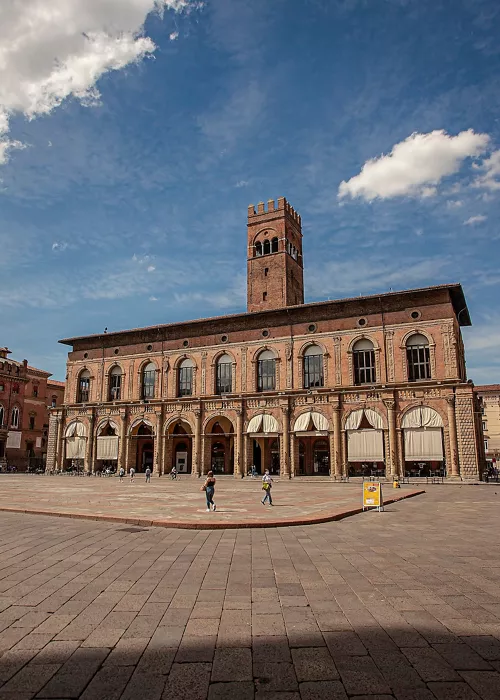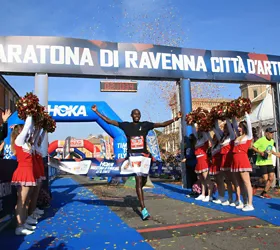The Abbey of Chiaravalle, Cistercian jewel and oasis of peace
The great concrete strip of the Autostrada del Sole motorway, in one of its busiest stretches, between Fiorenzuola and Fidenza, is not too far away, but the Abbey of Chiaravalle della Colomba di Alseno, between Piacenza and Parma, remains an oasis of peace, silence and prayer as it must have been in the mind of its founder, St Bernard of Chiaravalle, a charismatic figure of the Cistercian monastic order.
Historical landmark
At the behest of the bishop of Piacenza, Arduino, in 1135 St Bernard established a community of monks in his diocese that was to have a profound impact on the religious and civic life of the area and on the whole of northern Italy To this day, the jewel of the mediaeval cloister and its austere Romanesque-Gothic basilica are one of the most interesting examples of Cistercian architecture and style in Italy.
Contemplation and work in the fields
As great builders, through their architecture, the Cistercians gave form and substance to the austere simplicity of their rule, founded on the Benedictine motto of ora et labora, on a contemplative and active life. For centuries, the monks, who returned here in 1937 after being banished during the Napoleonic era, alternating work in the fields with study and prayer, carried out agronomic work; they reclaimed land and raised livestock, leaving a profound mark on the surrounding area that can still be seen today.
The mystery of the white dove
Among the many myths that swirl around the foundation of the abbey is that of the dove that echoes in its very name. Legend has it that it was a white dove that told the monks, with blades of straw, the location and perimeter of the monastery that was to be built. More likely, however, the dove recalls the Marian theme of the annunciation, so dear to the Cistercians: it is no coincidence that the basilica is also dedicated to St Mary of the Assumption.
A jewel of medieval architecture at the centre of historical cultural itineraries, the monastery complex, which is still inhabited by monks, is part of the Charte européenne des abbayes et sites cisterciens, which groups together all the most significant European Cistercian sites, and is also a stop on two important Council of Europe cultural routes: the Via Francigena and the Route européenne des abbayes cicterciennes.
The basilica is particularly worth a visit, with its sober lines in terracotta bricks, which illustrates the moment of transition between Romanesque and Gothic, with its three-nave layout that grows extraordinarily high. Also the Chapter House, the "parliament" of monastic life, and the beautiful cloister; built in the 13th century and still intact around the entire perimeter, it is one of the best preserved of its time and recalls a secluded and mystical atmosphere, fuelled by the complex numerical symbolism that governs its architecture.
Flower processions, festivals and processions
Although it is open all year round, the best time to visit the Abbey of Chiaravalle della Colomba is between May and June, when, according to a thousand-year-old custom, on the occasion of the feast of Corpus Christi, the traditional “infiorata” (“flower parade”) is set up in the central nave of the basilica, with a colourful carpet of flower petals and leaves reproducing paintings and sacred representations.
In the week of 20 August, on the occasion of the feast of the patron saint, the customary festival of San Bernardo is held every year in the abbey park. It is an opportunity to sample the flavours of Piacenza's gastronomic delights and watch the arrival of the procession from Fiorenzuola, with the statue of the saint carried by the Knights Templar. An excellent chance to admire such beauty.
A word of advice: among the products made by the monks of Chiaravalle, the liqueurs, made from aromatic herbs using age-old recipes, are very popular and can be bought, together with a vast selection of herbal teas, at the liqueur shop.
How to get there
From the A1 motorway (from Bologna or Milan) or the A21 (from Brescia or Cremona) take the Fiorenzuola d'Arda exit. Continue on road SP462R for one kilometre and merge onto the Fiorenzuola bypass until you reach the Fiorenzuola Est/ Chiaravalle exit. From here continue on Via Emilia Ovest for a kilometre, and then left on Busazza road, after 800 metres turn right, following the signs to Alseno and the free car park at the Abbey. The monastery can also be reached on foot directly from the Chiaravalle lay-by on the A1 motorway via a 600-metre footpath accessed by a revolving gate.



